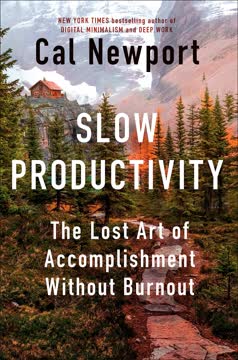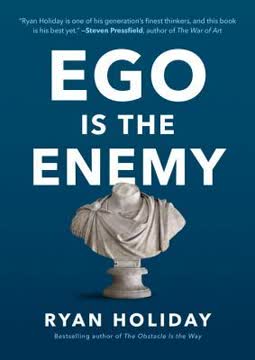Key Takeaways
1. Stoicism: The philosophical foundation of cognitive-behavioral therapy
"The philosophical origins of cognitive therapy can be traced back to the Stoic philosophers, particularly Zeno of Citium (fourth century BC), Chrysippus, Cicero, Seneca, Epictetus, and Marcus Aurelius."
Ancient wisdom meets modern psychology. Stoicism, an ancient Greek philosophy, serves as the bedrock for many principles in cognitive-behavioral therapy (CBT). This connection highlights the enduring relevance of philosophical ideas in addressing human psychological challenges.
Key Stoic concepts in CBT:
- Cognitive mediation: The idea that our thoughts influence our emotions
- Rational thinking: Challenging and changing irrational beliefs
- Acceptance: Embracing what we cannot change
- Self-discipline: Developing control over our thoughts and actions
The influence of Stoicism on CBT demonstrates the timeless nature of effective psychological strategies and the value of integrating philosophical insights into modern therapeutic approaches.
2. The ABC model: Connecting ancient wisdom to modern psychology
"A + B = C. This theory significantly differed from psychoanalytic, conditioning, and other theories of emotional disturbance that were popular in 1955."
Bridging ancient and modern thought. The ABC model, developed by Albert Ellis in rational emotive behavior therapy (REBT), bears a striking resemblance to Stoic principles. This model provides a framework for understanding and changing emotional responses.
Components of the ABC model:
- A: Activating event (external situation or trigger)
- B: Beliefs (thoughts and interpretations about the event)
- C: Consequences (emotional and behavioral responses)
By focusing on beliefs (B) as the mediator between events (A) and consequences (C), the ABC model echoes the Stoic emphasis on our judgments as the source of emotional disturbance. This approach empowers individuals to take control of their emotional responses by examining and modifying their beliefs.
3. Cognitive distancing: Separating thoughts from reality
"It's not things that upset us but our judgements about them."
Gaining perspective on our thoughts. Cognitive distancing, a key concept in both Stoicism and CBT, involves creating separation between our thoughts and external reality. This technique allows us to examine our beliefs more objectively and reduce their emotional impact.
Benefits of cognitive distancing:
- Reduced emotional reactivity
- Increased flexibility in thinking
- Enhanced ability to challenge irrational beliefs
- Improved problem-solving skills
By practicing cognitive distancing, we can cultivate a more balanced and rational approach to life's challenges, aligning with the Stoic ideal of maintaining equanimity in the face of adversity.
4. The dichotomy of control: Focusing on what we can change
"Some things are up to us and others are not."
Empowerment through acceptance. The dichotomy of control, a fundamental Stoic principle, teaches us to distinguish between what we can and cannot influence. This concept is mirrored in modern therapeutic approaches, including the Serenity Prayer used in various self-help programs.
Applying the dichotomy of control:
- Identify what is within our power (thoughts, judgments, actions)
- Recognize what is beyond our control (external events, others' opinions)
- Focus energy on influencing what we can change
- Practice acceptance of what we cannot alter
By embracing this principle, we can reduce unnecessary stress and anxiety, directing our efforts towards productive change while cultivating resilience in the face of uncontrollable circumstances.
5. Rational emotions: Cultivating healthy emotional responses
"The Stoics did not promote the absence of emotion or desire, but, rather, the cultivation of rational and adaptive emotions (eupatheiai)."
Balancing reason and emotion. Contrary to popular misconceptions, Stoicism does not advocate for emotional suppression. Instead, it promotes the development of rational emotions that are proportionate and appropriate to the situation.
Types of rational emotions in Stoicism:
- Joy (chara): Rational pleasure or contentment
- Caution (eulabeia): Rational concern or watchfulness
- Wishing (boulesis): Rational desire or preference
By cultivating these rational emotions, we can experience a fuller range of human experiences while maintaining psychological balance and resilience. This approach aligns with modern CBT techniques that aim to promote healthy emotional responses.
6. Premeditatio malorum: Preparing for adversity through mental rehearsal
"Rehearse before our mind every possible calamity, as a kind of emotional fire-drill."
Mental preparation for challenges. Premeditatio malorum, or negative visualization, is a Stoic technique that involves imagining potential hardships and setbacks. This practice helps build resilience and reduces anxiety about future events.
Benefits of premeditatio malorum:
- Reduced impact of unexpected adversities
- Increased emotional preparedness
- Enhanced problem-solving skills
- Greater appreciation for current circumstances
By regularly engaging in this mental exercise, we can develop a more robust psychological outlook, better equipped to handle life's inevitable challenges. This technique finds parallels in modern CBT approaches such as exposure therapy and cognitive rehearsal.
7. The View from Above: Gaining perspective on life's challenges
"Consider the lives led once by others, long ago, the lives led by others after you, the lives led even now, in foreign lands. How many people don't even know your name. How many will soon have forgotten it."
Cosmic perspective for personal growth. The View from Above is a Stoic contemplative exercise that encourages us to imagine our lives from a broader, cosmic perspective. This practice helps cultivate a sense of humility and reduces the impact of trivial concerns.
Key aspects of the View from Above:
- Temporal perspective: Considering our place in history
- Spatial perspective: Imagining Earth from space
- Social perspective: Reflecting on our role in society
By regularly engaging in this exercise, we can develop a more balanced and philosophical approach to life's challenges, aligning with the Stoic ideal of living in harmony with the natural order of the universe.
8. Acceptance and mindfulness: Stoic principles in third-wave CBT
"Acceptance, as we mean it, is the voluntary adoption of an intentionally open, receptive, flexible, and nonjudgmental posture with respect to moment-to-moment experience."
Ancient wisdom in modern therapy. The principles of acceptance and mindfulness, central to third-wave CBT approaches, have clear parallels in Stoic philosophy. These concepts emphasize present-moment awareness and non-judgmental observation of our experiences.
Stoic influences in third-wave CBT:
- Acceptance of unchangeable circumstances
- Mindful attention to thoughts and emotions
- Focus on values-driven behavior
- Cognitive defusion (separating thoughts from reality)
By incorporating these Stoic-inspired principles, modern therapies like Acceptance and Commitment Therapy (ACT) offer powerful tools for psychological well-being and personal growth.
9. Self-analysis and disputation: Challenging irrational beliefs
"Having these thoughts always at hand, and engrossing yourself in them when you are by yourself, and making them ready for use, you will never need any one to comfort and strengthen you."
Cultivating inner strength. Stoicism emphasizes the importance of regular self-reflection and challenging our own beliefs. This practice aligns closely with the cognitive restructuring techniques used in modern CBT.
Steps for Stoic self-analysis:
- Identify troubling thoughts or beliefs
- Examine the evidence supporting these beliefs
- Consider alternative perspectives
- Develop more rational and balanced viewpoints
By engaging in this process regularly, we can develop greater emotional resilience and a more rational approach to life's challenges, echoing the Stoic ideal of cultivating inner wisdom and strength.
10. Living in accordance with nature: The ultimate Stoic goal
"Our motto, as everyone knows, is to live in conformity with nature."
Harmony with the cosmic order. The Stoic concept of living in accordance with nature encompasses aligning our actions with reason, virtue, and the natural order of the universe. This principle serves as the ultimate guide for Stoic ethics and personal development.
Key aspects of living in accordance with nature:
- Cultivating wisdom and virtue
- Accepting what is beyond our control
- Fulfilling our roles and responsibilities
- Recognizing our interconnectedness with all humanity
By striving to live in harmony with nature, we can achieve greater peace of mind, resilience, and a sense of purpose. This overarching Stoic goal provides a framework for integrating various philosophical and psychological principles into a coherent approach to life.
Last updated:
FAQ
What's The Philosophy of Cognitive Behavioural Therapy about?
- Integration of Philosophy and Therapy: The book explores the connection between ancient Stoic philosophy and modern cognitive-behavioral therapy (CBT), showing how they were once intertwined disciplines.
- Historical Context: It traces the evolution of CBT from its philosophical origins, highlighting contributions from figures like Epictetus and Marcus Aurelius.
- Practical Applications: The text provides techniques from Stoic philosophy that can be applied in modern psychotherapy and self-help to manage emotions and improve mental health.
Why should I read The Philosophy of Cognitive Behavioural Therapy?
- Deep Understanding of CBT: The book offers a comprehensive look at the philosophical underpinnings of CBT, beneficial for mental health practitioners and students.
- Historical Insights: It bridges the gap between ancient wisdom and modern therapeutic practices, enriching one's approach to therapy and self-help.
- Practical Techniques: Includes actionable techniques for personal development that readers can implement in their lives or therapeutic practices.
What are the key takeaways of The Philosophy of Cognitive Behavioural Therapy?
- Cognitive Mediation: Emphasizes that emotional disturbances are shaped by our perceptions, a principle central to both Stoicism and CBT.
- Dichotomy of Control: Introduces the concept that some things are within our control (thoughts and actions) while others are not (external events).
- Emotional Regulation Techniques: Discusses methods like mindfulness and rational disputation to cultivate emotional resilience, rooted in Stoic philosophy.
How does Stoicism relate to modern CBT in The Philosophy of Cognitive Behavioural Therapy?
- Philosophical Origins: Argues that CBT has roots in Stoic philosophy, with both emphasizing rational thought in managing emotions.
- Cognitive Restructuring: Both Stoicism and CBT focus on identifying and challenging irrational beliefs to improve emotional health.
- Practical Techniques: Stoic methods like mindfulness and rational disputation are integrated into modern CBT practices.
What specific techniques from Stoicism are discussed in The Philosophy of Cognitive Behavioural Therapy?
- Mindfulness of Judgments: Encourages awareness of how judgments affect emotions, promoting reflection before reacting emotionally.
- Premeditatio Malorum: Involves contemplating potential misfortunes to prepare emotionally, reducing anxiety about the future.
- Self-Analysis and Disputation: Highlights examining thoughts and disputing irrational beliefs to challenge negative thought patterns.
What is praemeditatio malorum and how is it used in The Philosophy of Cognitive Behavioural Therapy?
- Definition: Translates to "premeditation of evils," a Stoic exercise of imagining potential misfortunes in advance.
- Coping Mechanism: Helps reduce the shock of unexpected events and cultivate resilience by visualizing worst-case scenarios.
- Practical Application: Suggested as a regular practice, especially in the morning, to mentally rehearse responses to anticipated difficulties.
How does The Philosophy of Cognitive Behavioural Therapy define mindfulness in the context of Stoicism?
- Concept of prosoche: Mindfulness in Stoicism is about "attention to oneself," focusing on present thoughts and judgments.
- Self-Monitoring: Continuous self-awareness helps manage emotional responses and maintain control over judgments.
- Connection to CBT: Parallels are drawn between Stoic mindfulness and modern CBT techniques, both focusing on cognitive processes.
What are some key Stoic techniques discussed in The Philosophy of Cognitive Behavioural Therapy?
- Cognitive Distancing: Separating thoughts from external events to gain an objective perspective and reduce emotional disturbances.
- Role Modeling: Contemplating virtues of historical figures or sages as guides for personal behavior, encouraging emulation of positive traits.
- Daily Reflection: Practicing self-reflection to review actions and thoughts, similar to modern therapeutic journaling.
What are the best quotes from The Philosophy of Cognitive Behavioural Therapy and what do they mean?
- "Men are disturbed not by things, but by the views which they take of them.": Highlights that perceptions shape emotional responses, suggesting thought changes can lead to healing.
- "Some things are up to us and others are not.": Introduces the Dichotomy of Control, focusing on actions and judgments while accepting external circumstances.
- "The philosopher’s school is a doctor’s clinic.": Illustrates the therapeutic nature of philosophy, promoting mental well-being through philosophical training.
What is the significance of the Dichotomy of Control in The Philosophy of Cognitive Behavioural Therapy?
- Focus on Control: Teaches distinguishing between what can be controlled (thoughts and actions) and what cannot (external events).
- Acceptance of External Events: Encourages acceptance of outcomes beyond control, fostering a peaceful mindset.
- Practical Application: Provides examples of applying the Dichotomy of Control in daily life to navigate challenges with clarity.
How can I apply the concepts from The Philosophy of Cognitive Behavioural Therapy in my daily life?
- Daily Reflection: Engage in self-reflection practices like journaling to identify areas for improvement and reinforce positive behaviors.
- Premeditation of Evils: Visualize potential challenges and mentally rehearse responses to build resilience.
- Mindfulness and Acceptance: Focus on present thoughts and judgments, using Stoic and CBT techniques to manage emotional responses.
How does The Philosophy of Cognitive Behavioural Therapy relate Stoicism to modern CBT practices?
- Cognitive Techniques: Illustrates alignment between Stoic techniques and CBT methods, both challenging negative thoughts.
- Mindfulness Practices: Connects Stoic mindfulness with modern therapies, encouraging present-moment awareness and acceptance.
- Therapeutic Framework: Argues that Stoicism provides a philosophical foundation for addressing emotional disturbances, enhancing CBT effectiveness.
Review Summary
The Philosophy of Cognitive-Behavioural Therapy (CBT) receives mostly positive reviews for its exploration of Stoicism's influence on modern psychotherapy. Readers appreciate the historical context and practical applications, though some find it overly academic or repetitive. The book draws connections between ancient philosophy and CBT techniques, offering insights for therapists and laypeople alike. Critics note occasional typos and potential bias against Christianity. Overall, it's praised for its comprehensive approach to integrating Stoic principles with contemporary psychological practices.
Similar Books








Download PDF
Download EPUB
.epub digital book format is ideal for reading ebooks on phones, tablets, and e-readers.









